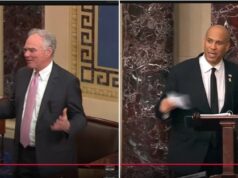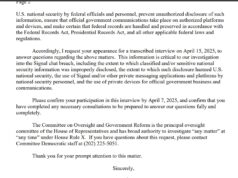 Cross posted at Daily Kos
Cross posted at Daily Kos
Had enough of the brain-dead “debate” over government in Washington? Well, Aneesh Chopra — President Obama’s former Chief Technology Officer (CTO) and a 2013 candidate for Virginia Lieutenant Governor — has some actual new ideas to offer.
In his new book, Innovative State, Chopra paints a picture of government on the model of a sleek, high tech startup, engaging citizens and solving problems by opening access to information and finding innovative new ways to meet our highest goals.
Progressives recognize the need for government to help citizens build and maintain a civilized society. But to be effective, we have to push our governments to keep up with the speed, efficiency and challenges of the Internet Era. As Chopra puts it:
Americans have always understood that government is not some sacred entity with which the people should not tamper. It is a tool. Like other tools, it needs to be revised and upgraded to remain useful.
As he notes, America’s founders junked their first attempt at self-government — the Articles of Confederation — after only 8 years when it proved inadequate. Why cling to outdated and inadequate government models today?
Democracy began with the ancient Greek concept of the agora, the open marketplace for both products and ideas. Today, the Internet represents the promise of a high-tech agora, a “digital public square.” Chopra argues that government can change its relationship with citizens by using contemporary tools to empower the people with information. Indeed, in a country of over 300 million people, where old-fashioned town hall democracy is much less feasible, the Internet, smart phones, and related technologies arguably represent our best shot at that old sixties goal, “participatory democracy.”
Chopra discusses the group Code for America, a kind of Geek Corps that sends young technology experts to willing cities and towns to find quick tech startup type solutions for vexing problems. For example, one team helped overcome conflict between New Orleans government and residents over city plans to demolish blighted buildings by creating a user-friendly Web app to disseminate information about the city’s demolition plans and schedule.
The ultimate goal of such efforts, Code for America founder Jen Pahlka explains in the book, is to break down the wall between government and citizens: “You start to create social norms, to say, yes, government is something we do together, I don’t just pay taxes and vote, I am an active participant, helping to make our community work.”
Government can extend its problem-solving effectiveness by serving as a platform through which others use the data and opportunities it provides to achieve shared goals. The best example Chopra gives is the treasure trove of data the National Weather Service provides, which has been used to great effect by companies like the Weather Channel. Those companies, while turning a profit, also spread important alerts and information much better than the government could ever do. It’s a classic win-win situation.
Chopra cites Amazon’s “visionary business decision to open its e-commerce platform to external retailers” and cites many ways the government can do the same by opening up its data and crowd-sourcing its problem solving. It worked when the US opened up access to the data generated by the Defense Navigation Satellite System and thereby made way for the GPS industry. And Chopra provides examples and ideas of how it can work to help Americans handle a wide variety of challenges — environmental, health care, homelessness, etc.
While I had to chuckle at his reference to a “data liberation movement”, the Data.gov platform that he launched now includes over 400,000 government data sets, and Chopra promoted “datapaloozas” where app developers compete to show how they can leverage that data to produce products that are useful as well as profitable.
Chopra provides a new conception of the government’s responsibility to provide and maintain infrastructure, updating that phrase beyond roads, bridges and water tanks to include digital infrastructure and knowledge-based capital. He notes that in 1904, Baltimore wasn’t able to manage an enormous fire because the manufacturers of hoses and fire hydrants had not designed them to fit with other manufacturers’ products. While standardization and interoperability are snoozer topics, this example shows that that they are also essential to save and improve lives. This relates to some of our current problems, such as updating our archaic electric grid to function as a smart grid that can respond minute by minute to changes in demand, weather, etc. to be more resilient and efficient in managing our precious energy resources.
The author gives examples of how the Obama administration has been bringing tech entrepreneurs, along with their spirit and ideas, into government through programs with such names as Entrepreneurs in Residence and White House Innovation Fellows, providing fresh perspectives to get problems solved in new ways. As Chopra notes, whereas in the marketplace, you can choose to buy from the more innovative company that “gets it”, it is not as easy to select another government, particularly for the least privileged among us.
Ultimately, Chopra’s book asks the provocative question of whether we can use technology to get closer to achieving the ideal of government of the people, by the people, for the people. And he makes a strong case that — well, yes, we can.



 Sign up for the Blue Virginia weekly newsletter
Sign up for the Blue Virginia weekly newsletter








